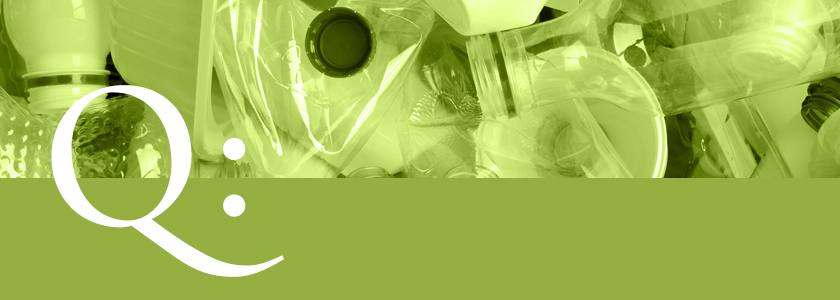
The impacts of climate change are accelerating, and so is Yale’s plan for meeting the moment. The University has ambitious plans to reduce its greenhouse gas emissions, improve waste diversion, and address climate adaptation and resiliency, among a host of other initiatives aimed at keeping campus sustainable and propelling critical research on climate solutions.
As we settle into a new academic year, we thought it a good time for a crash course (or a refresher) on sustainability at Yale: how it works, and how you can get involved.
This Q&A answers frequently asked questions about sustainability at Yale. Whether you’re looking for tips on living and working sustainably on campus or a deep dive into metrics and data, you’ll find links to it here. Tip #1: If you want to keep up with all the news and happenings, sign up for the Yale Sustainability newsletter!

Does Yale have a sustainability plan?
Yes! The University has a detailed strategy called the Yale Sustainability Plan 2025, or “YSP 2025” for short.
(Quick history: Yale created an Office of Sustainability in 2005, the same year it established its first set of greenhouse gas reduction targets. The first Yale Sustainability Plan was published in 2010 and the current plan is its third iteration.)
The YSP 2025 contains 38 goals organized into nine ambition—or topic—areas. These goals provide a roadmap for everything from sustainable construction to human health and well-being. (For an inspiring example of the former, check out Yale Divinity School’s Living Village Project; for an example of the latter, read about how Yale libraries replaced chemical “thermal paper” with a more sustainable alternative.)
The Yale Sustainability Plan also connects research and teaching with opportunities for students to solve the real-world challenges, such as one student’s work to track down refrigerant gas leaks on campus.
What happens after 2025?
As its name suggests, many of the goals in the Yale Sustainability Plan are geared toward 2025. Yale will soon begin the process to create a new multi-year roadmap by engaging stakeholders from across the University.

What is Yale’s plan to reduce its greenhouse gas emissions?
On its campus, Yale aims to reach net zero carbon emissions by 2035, and to reduce actual emissions to zero as soon as possible and no later than 2050. (“Net zero” simply means zero emissions after carbon offsets and other campus reductions are factored in.)
This ambition—which aligns with the international scientific consensus around the critical importance of decarbonizing the world’s economy by midcentury—represents a dramatic new commitment that will reshape the University’s approach to the consumption of energy.
How does Yale plan to achieve those reductions?
Yale’s plan calls for incrementally reducing campus emissions from direct sources (Yale’s power plants and vehicle fleet) as well as purchased electricity, improving efficiency of our buildings through new design and renovations, using space in our buildings more efficiently, and increasing deployment of renewable energy on campus. The University also plans to judiciously use verified carbon offsets to supplement the reduction of actual emissions, enabling us to reach net zero emissions by 2035.
Learn how Yale is taking action on climate change.

Is Yale divesting from fossil fuel companies?
In April 2021, Yale announced a new set of principles to guide the University’s investment decisions pertaining to fossil fuel producers. The Yale Board of Trustees approved guidelines—recommended by an expert faculty panel—that spell out what makes a company ineligible for investment by Yale. Read those principles—and see the current list of ineligible companies—on the website for the Advisory Committee on Investor Responsibility.

How does recycling work at Yale?
Recycling at Yale is single stream—that means you put all clean recyclable items into a single bin. (A quick rinse of dirty recyclables usually does the trick.)
Look for the “Single Stream Recycling” signs around campus that tell you what can and can’t be placed in recycling bins. The Recycle CT Wizard also lets you search specific items to see if they are recyclable. But before you even get to recycle, remember the first two R’s—reduce and reuse—and bring your own as much as possible!
What about other types of waste?
For details on how Yale manages all other waste—from shredded paper and food scraps to electronic waste to wood and brush—check out the Managing Materials section of our website.

Does Yale publish data on its progress?
Yes! And there are a lot of ways to explore this information. Every year, the Office of Sustainability publishes a comprehensive Progress Report that updates the status of each of the 38 goals in the overarching Yale Sustainability Plan. Those same updates are published on the Priorities and Progress section of our website if you prefer to view it in a web browser.
For an even deeper dive, check out the Yale Sustainability Data Hub, which pulls historical data sets into interactive graphs and charts.

Who is responsible for setting Yale’s sustainability goals?
The Office of Sustainability undertook a robust and broad stakeholder engagement process to set goals for the Yale Sustainability Plan 2025. Many partners from across the University and beyond have provided input and strategic guidance to help shape Yale’s ambitions. Learn more about Yale’s vision and approach to building a more sustainable world.
Who is responsible for meeting Yale’s sustainability goals?
Meeting Yale’s sustainability goals is a shared responsibility.
The University has committed to ambitious goals for greenhouse gas reductions and a broad range of other sustainability topics and assumes accountability for meeting those targets.
As individuals, there is a lot we can do to be good stewards of the environment during our time at Yale. The decisions you make daily can help us reach our sustainability goals! For a long list of tips on how to produce less waste, save energy, conserve water and more, check out the Take Action section of our website.

How can I move around Yale sustainably?
Visit the “It’s Your Yale” website for information about onsite vehicle parking and bike parking (and bicycle safety tips and training), as well as Yale’s free shuttle service, discounted train, bus, and rideshare options, and free commuter counseling. Also, check out the CTrides website for information and tools to plan your sustainable commute.

How can I get involved in making Yale more sustainable?
There are so many ways! Here are just a few:
Visit the Take Action section of our website for a host of tips on living sustainably at Yale. While it sometimes may not seem like it, the decisions you make every day help us reach our sustainability goals.
Join us in October for “Celebrate Sustainability,” a week of events to raise awareness and deepen engagement around sustainability at Yale. Events include talks, walks, yoga, tree planting, art exhibits, plant-forward cooking demos, botanical garden tours, and so much more!
Lastly, sign up for the Yale Sustainability newsletter to learn about events, ways to take action, and inspiring stories from around. Yale.

What else can you tell me about sustainability at Yale?
The Yale Sustainability website offers a wealth of information and stories about how Yale is responding to the climate crisis. You can also browse our “Yale Experts Explain” series to delve into environmental topics you may have heard about in the news but want to better understand (such as biodiversity, microplastics, ocean acidification, and wildfires, to name just a few). And don’t forget to keep an eye on our News page for the latest stories about sustainability “wins” around Yale.
If after all that you still haven’t found an answer to your question—or if you have an idea for how to improve sustainability at Yale—drop us a line at sustainability@yale.edu.